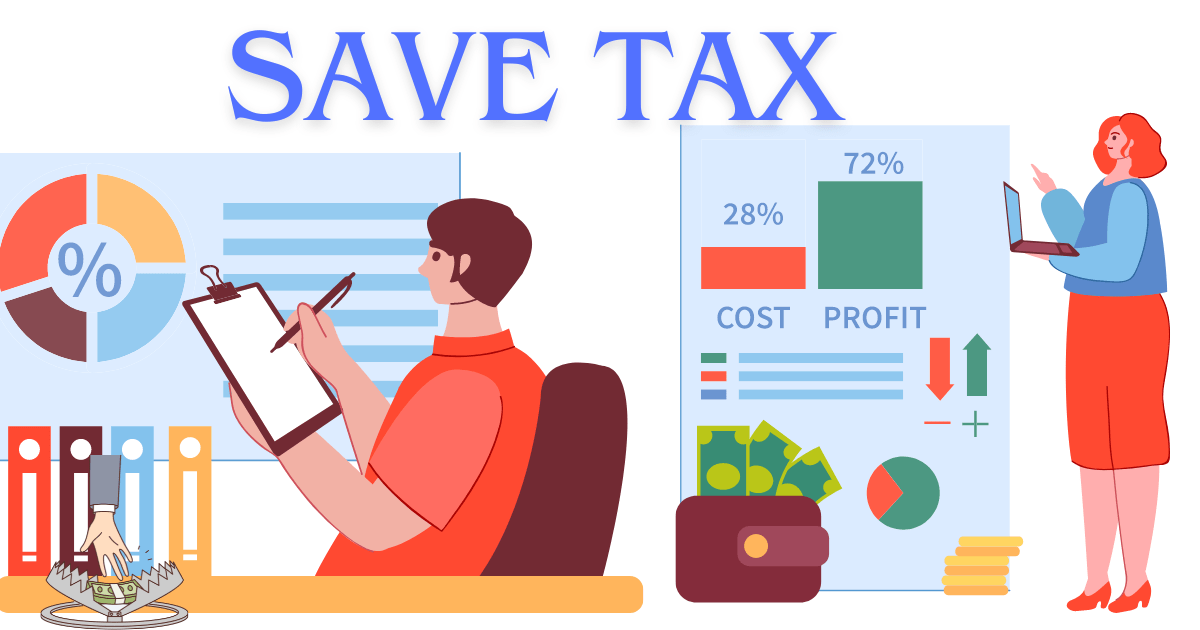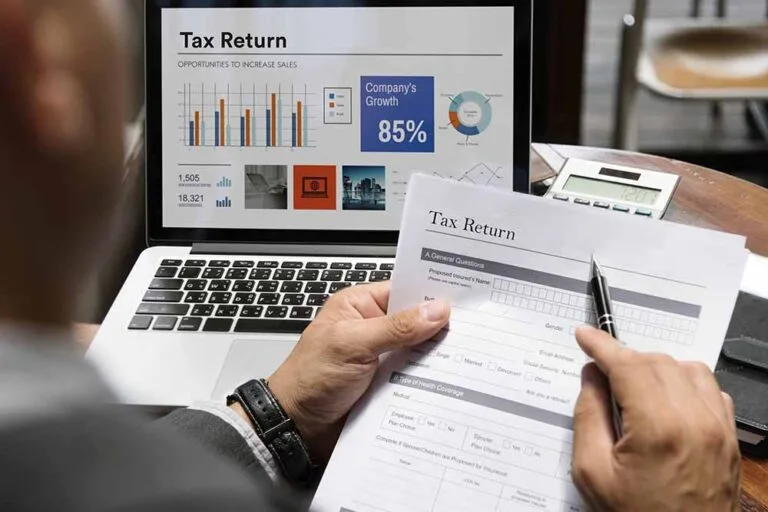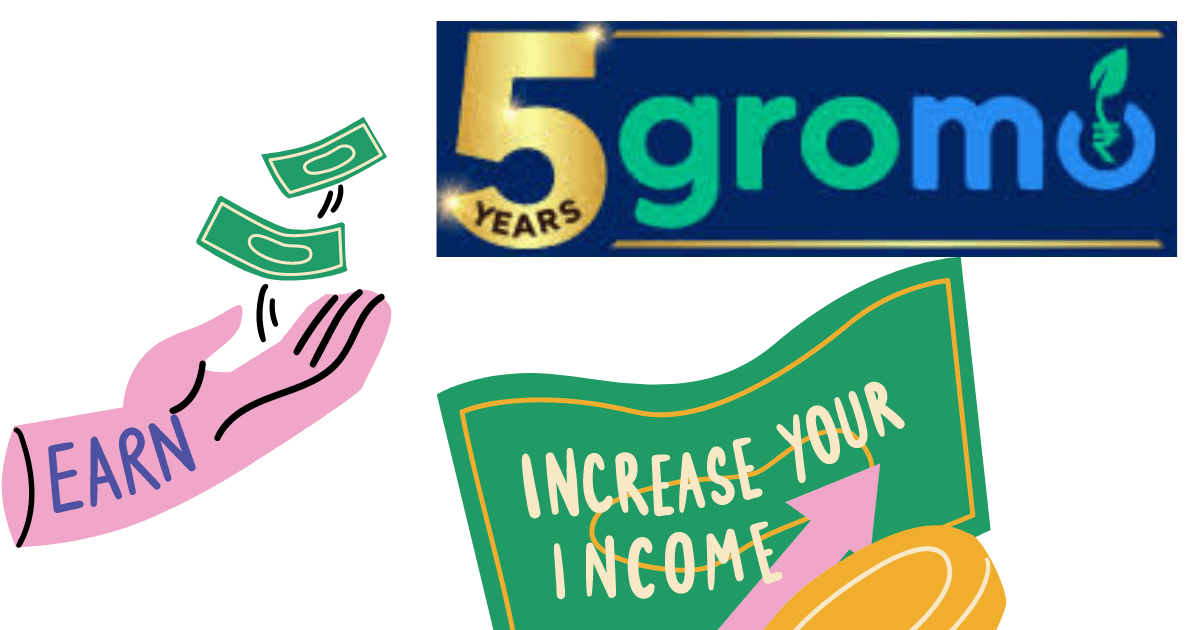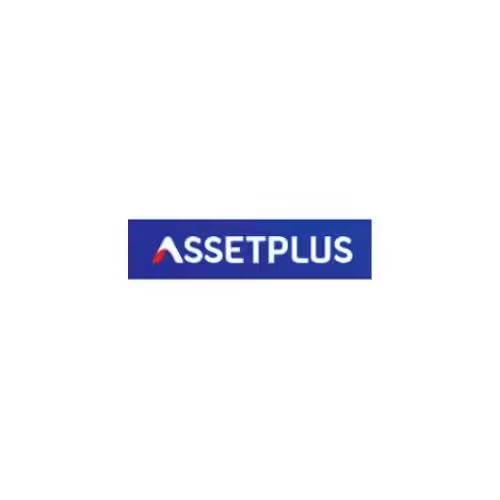Introduction
The complexities of the tax-saving strategies for income shouldn’t be like a maze. In the year of 2023-24, you have a multitude of options to not just be in compliance with tax law as well as ensure that your money is working to your benefit. From using deductions for leverage to figuring out exemptions, this guide outlines the most effective strategies available which promise to protect your financial position. Prepare yourself for informed choices in line with your budgeting targets and increase your savings. Here we will discuss The Top 10 Strategies for Saving the Income Tax in FY 2023-24.
A Brief Overview of Income Tax
Income tax explanation
The tax on income might appear to be an arduous task however, at the core is quite simple. This is a tax people or businesses have to pay on the earnings that they get each year, which is collected by the government. It can come from many sources like salary or interest earned from savings accounts, the profits of companies, and even profits from investment.
One of the most important things to remember this is that not every earnings are taxed in the exact identical way. There is a variety of rules and tax taxes based on where as well as the quantity of income. This is where the significance of knowing tax planning and preparing your tax returns becomes important.
The importance of tax planning
Tax planning is an important element of financial wellness that is often neglected. Simply put the process involves systematically organizing your financial affairs so that you can minimize the tax burden. That doesn’t mean you should avoid paying tax! You should make smarter decisions all through the year, such as making investments in tax-saving tools and taking advantage of tax-exempt deductions and exempts.
Tax planning is a good way to ensure that you’re not paying any higher taxes than you are required to, and could significantly affect your financial savings goals and objectives for the future. Paying attention to the tax implications can make a significant difference in making money or investing to save for the future.Top 10 Strategies to Save Income Tax for FY 2023-24
Top 10 Tips to Save the Income Tax in FY 2023-23

The definition of the financial year
The year of the financial, commonly abbreviated to FY it is that is used to calculate the annual financial statements of firms and organizations. In several countries, governments utilizes the year’s financials as a tax year. In the case of individuals who pay income tax it is essential to be aware that the year of financials for the United States runs from January 1 through December 31. But, it can be different in different countries, and the fiscal year may begin and close on various dates. To plan and completing income tax forms being aware of the details of the fiscal calendar 2023-24 is essential.
Deadlines and key dates for FY 2023-23
The fiscal calendar year 2023-24 there are some crucial dates and deadlines that taxpayers need to mark onto their calendars. The year will begin with the 1st of January in 2023 and will end with the date of December 31 2023. The most crucial dates to be aware of is April 15th of 2024. This is the date that individuals’ tax returns are usually due to be filed with IRS. Internal Revenue Service (IRS).
If this date falls on a Saturday, Sunday or day of public holidays this deadline could be extended to the following working day. In addition, those who require additional time may request an extension. This typically allows them until the 15th of October to submit. Be aware of that the dates for estimated quarterly taxes for taxpayers who work for themselves or earn additional income that’s not required to be withheld, usually during April in June, July, September and January the next year. Be aware of these dates is crucial to make sure you don’t get surprised and you don’t risk penalties if you make late filings.
Simple Tax-Saving Strategies
Tax planning isn’t only concerned with saving money, but it is as well about intelligent investingand making educated decision-making. Simple tax saving strategies, used correctly, could assist in reducing the amount of tax you owe by a significant amount, thus reducing the tax burden.
Making deductions in accordance with Section 80C.
The most effective methods to cut down on tax is to fully utilize the tax deductions provided under Section 80C in the Income Tax Act. The section allows deductions of up to 1.5 lakhs per year for the expenses and investments. A few of the most popular choices are Employees Provident Fund (EPF), Public Provident Fund (PPF), National Savings Certificate (NSC), premiums for life insurance, as well as the principal payments on loans to homeowners. If you invest in these funds and claiming deductions on charges like tuition costs for your children, you could substantially reduce your tax-deductible income.
Making investments in tax-saving schemes such as PPF as well as NSC
Making investments in specific instruments for tax savings can be an effective choice. It is the Public Provident Fund (PPF) as well as the National Savings Certificate (NSC) are two schemes that can not only assist in reducing taxes under Section 80C, but they also provide attractive interest rates which serve two purposes: investing growth and tax savings. PPF For instance, it offers a term of 15 years, and provides tax-free interest. This makes it an ideal alternative for long-term planning of finances. NSC however, on contrary, has five years of maturity and interest that is earned is tax-deductible, however it is still a great alternative for people seeking to reduce taxes.
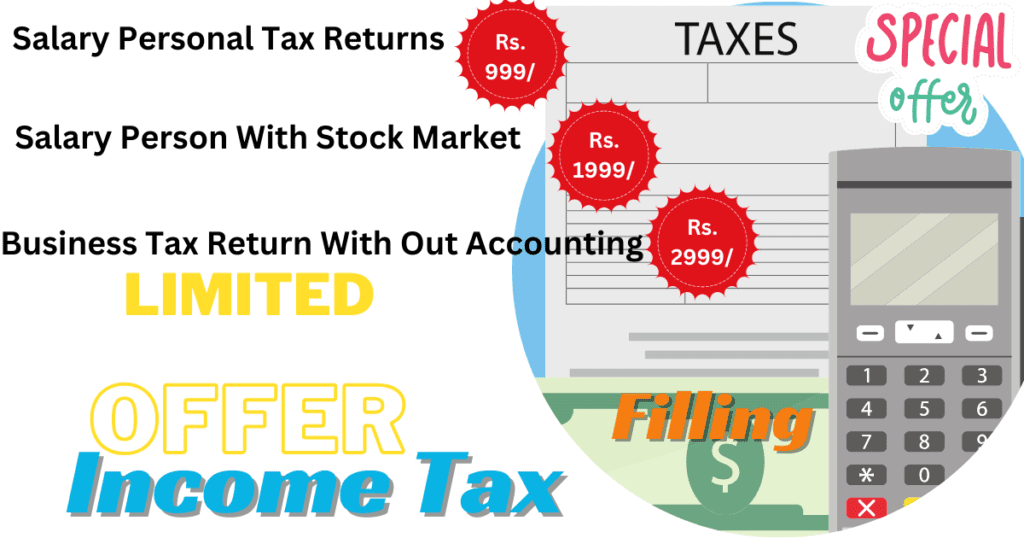
Maximizing Exemptions
Five Strategies to Become Professional Tax Planning and Consultancy Services
Apart from tax-saving investments tax-payers also have the opportunity to maximize the exemptions they are entitled to. The exemptions offered are the allowances made by the federal government to certain categories of spending or income elements, which reduce the amount of tax deductible earnings.
Benefiting from HRA exemption
If you live in an apartment and are living in rented accommodation, the House Rent Allowance (HRA) could be an excellent exclusion. If your employer offers the HRA component of your compensation You can get an exemption from the rent you have to pay, with certain restrictions. The amount you can claim exemption for is the lowest amount of amount of HRA that you receive, and is 40 percent (50 percent for cities) of your salary or the difference of rent that you have paid more than 10% of the basic wage. The benefit of this exemption is that it can significantly reduce your tax-deductible income.
Exemptions claimable for medical expenses
Medical expenses could take a toll on your budget if they are you don’t plan to plan. The good news is that you can take advantage of the Income Tax Act allows exemptions on medical costs. As an example, medical insurance costs for spouses, self and dependent children can be tax-deductible in Section 80D. Furthermore, costs associated with regular health checks can result in deductions. Keep the receipts and other documents related to medical bills because you might require them to prove your case when claims for exemptions. If you are aware and claim these exemptions, taxpayers could reduce their total tax bill, and make substantial savings.
The benefits of Tax-Saving Investments
Investments in tax-saving strategies aren’t only to help you reduce your tax bill during the tax year. They also play an essential part in the overall budgeting, providing both short- and long-term advantages. Being aware of these factors can allow you to make better decisions and improve the value of your investments.
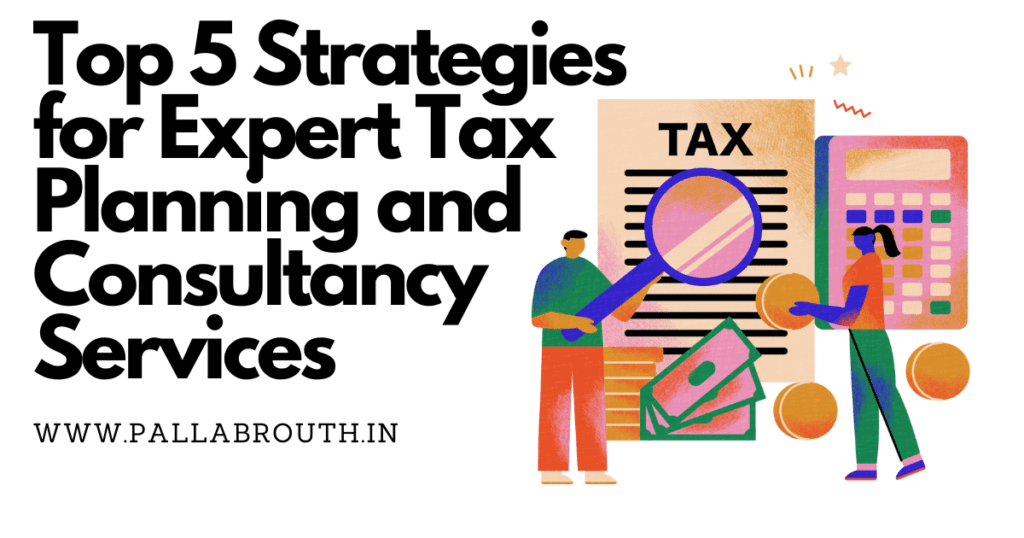
Investigating tax-saving strategies such as ELSS
One of the top tax-saving alternatives are one of the most popular tax-saving options is Equity-Linked Savings Scheme (ELSS). The ELSS mutual funds don’t just offer tax benefits as per Section 80C of Income Tax Act but also provide the chance to earn better returns than the traditional tax-saving options such as Fixed deposits and National Savings Certificates. The funds come with an initial lock-in time of three years. This is the most short of all tax-saving alternatives, which makes they more fluid. When you invest into ELSS lets you grow your assets while reducing tax, which makes the perfect choice to young investors as well as those who want to build their long-term capital.
Benefits of investing over the long term in tax-saving instruments
Tax-saving tools are to not only serve the purpose of tax savings in the year ahead, but to ensure your financial future. In particular, investment options such as Public Provident Fund (PPF) or ELSS are excellent for building an accumulation of retirement funds or for achieving the long-term objectives like buying an apartment or financing the education of your child. They can help you stay disciplined, since they are locked-in times and benefits, such as compounding interest. As time passes, these returns could significantly boost your assets, bringing the security of your finances and tranquility.
The Retirement Planning
One of the most important aspects to financial plan is the preparation for retirement. The process requires careful planning to ensure a pleasant and safe retirement. There are many strategies to reduce taxes utilized to reach this goal effectively.
Tax benefits to understand NPS
National Pension System (NPS) is a federally-funded pension system that aids you in building up a retirement fund, but provides attractive tax benefits. The contributions to NPS can be claimed as a tax-deductible deductions in Section 80CCD and can greatly decrease your tax deductible earnings. In addition, when you retire you may be able to take an amount of fund tax-free. The remaining can be used to pay an annual pension. This provides an additional benefit in the ability to save tax and also generating an income that is steady post retirement.
Strategies for saving tax as you plan for retirement
Saving for retirement and reducing on taxes demands a calculated strategy. These are some of the most effective ways to plan your retirement:
Make sure you maximize your contribution in NPS or EPF (Employees Provident Fund) in order to maximize the benefits of the tax benefits offered.
Invest into Pension Plans provided by insurance firms. These plans do not just provide tax-free benefits as per Section 80CCC, they also provide an income stream that is consistent after retirement.
If you are eligible, take advantage of the tax advantages provided under Section 80CCD(1B) through investing more money in NPS over and above the maximum deduction allowed by law.
Be aware of the benefits from health insurance. Health insurance premiums for yourself and dependents which includes your parents can be tax-deductible in Section 80D. It not only allows you to conserve tax money, but also assures that you’re ready for health emergencies when you retire.
Utilizing these methods by implementing these strategies, you will significantly lower your tax liabilities and build up a substantial retirement fund, which will give you security in your later years.
Making money from the home Loans
What is the best way to apply for a Business Loans with Open Capital
The decision to take out a mortgage for your home can be a major financial investment not only for purchasing your dream home, but in order to reduce your income tax. Government encourages homeowners through numerous tax-related incentives that come with the home loan.
Benefits of tax-free home loans principal repayment and interest
If you are taking mortgage for your home and you pay it back, there are two elements that are the principal as well as the interest. It is important to note that the Income Tax Act allows deductions on these two components. The principal portion of loan repayment can be claimed as the deduction allowed under Section 80C, with the limit being 1.5 lakh annually. In addition, the interest component could be eligible for deduction up to 2 lakh in Section 24(b) when you own your home. This deduction can dramatically reduce your tax-deductible earnings, resulting in a reduction of the taxes you have to pay.
The pros and cons of buying a the property to save on taxes
The tax savings could make purchasing a property attractive but it’s important to consider different aspects. First, consider the area of the property as well as the potential to appreciate. Making investments in real estate located in an area that is booming can bring better results in the future. Also, be aware of the conditions and terms of your home loan in order to make sure it is in line with your financial needs. The loan’s interest rate, duration, as well as other fees may affect the benefits overall. The goal is to be in line with your budgeting, rather than as a way to save money.
Benefits of the benefits of renting
The option of renting out your property is also a great option to cut down on tax as well as generate an income.
The tax benefits that come with the rental income earned
The rental income you earn is taxable However there are deductions available under the Income Tax Act provides deductions that could reduce your tax bill. Based on the rental gross income it is possible to deduct the tax on property that was paid throughout the course of. A standard deduction of 30percent is permitted to cover maintenance, repairs and various other costs, regardless of what you actually spend. This greatly reduces the tax-deductible rent. Additionally, if you’ve got mortgage on the property that you rent out The interest earned on the loan can be deducted from rental earnings without any higher limit. This can lead to additional savings.
Considerations to make when renting a house for tax saving reasons
When you are considering renting your home is essential to know the current market conditions. Understanding the typical rent for the neighborhood can help you establish a fair price. In addition, you should consider the qualities of your tenants to ensure stable income as well as minimal damages. Also, it is important to consider the time when the property is vacant. Making a well-thought-out choice about leasing out property could contribute substantially to the tax savings strategy you employ as well as assisting in your economic growth.
Optimizing Health Insurance
If you want to save tax dollars while taking care of our well-being, optimizing our health insurance is a wise choice to take in the fiscal year 2023-24. The cost of premiums to cover health care can offer a bright side by providing tax advantages that significantly lower the amount of income that is tax deductible.
Examining tax advantages of premiums for health insurance
In the beginning, the cost that you pay for health insurance yourself, your family members, as well as your parents, could qualify to claim deductions according to Section 80D in the Income Tax Act. As an example, you can claim an exemption of up to $25,000 annually in insurance costs for you and your spouse as well as dependent children. If you’re paying for health insurance coverage for your parents aged sixty years old or more The deduction limits go upwards to a maximum of Rs50,000. So, planning carefully for these costs can result in significant tax reduction.
Strategies for maximising deductions for medical-related costs
Additionally, if any of the members of your family have had regular health checks that were preventative in the last year, you may get an additional deduction on any expenses you incur, up to a cap of the amount of Rs5,000. This falls within the general allowance allowed under Section 80D. It is also beneficial to examine and maybe modify your health insurance coverage to include more comprehensive treatment, in light of the growing cost of healthcare. It will not only provide more health insurance but could also mean greater tax deductions.
Donations to charities for tax savings
Donations to charities aren’t just about getting goodwill, they’re an ideal way to earn tax-savings. When you make contributions to approved charities, you will decrease your taxable income which will reduce your tax burden for financial year 2023-24.
The tax benefits of charitable donations
According to Section 80G under the Income Tax Act, donations that are made to specific relief funds or charitable organizations are eligible for deductions from your net income, making the strategy a viable choice for tax savings. Deduction rates vary between 50% and 100percent of total amount given, based on the kind of organization which you’ve contributed to. Additionally, sometimes there is no amount that is eligible for deduction.
The selection of charitable organizations eligible to help you save taxes
Donations of all kinds can be deducted in Section 80G. It is essential to confirm that the charity you’re giving money to has the right tax advantages. The typical requirement is that the organization be able to show proof of an 80G certification in order for donors to benefit of tax deductions. So, prior to making a gift you should verify for the legitimacy of the entity and the status of tax exemption for your donation. It’s not just a way to ensure that the donation is going to the cause you believe in but assists you in avoiding tax.
Through smartly using the benefits of health insurance and charitable contributions to save on taxes You can get maximum profit from your earnings while also improving your own health as well as the well-being of others.
Utilizing Tax-Incentivized Schemes
Utilizing schemes are promoted by the government to offer directly and indirectly tax advantages could significantly reduce your tax liabilities. Two of the most popular programs with tax advantages are The Pradhan Mantri Awas Yojana ( PMAY) as well as the National Social Assistance Programme ( the NSAP). These programs not only help with the social welfare of people but also provide benefits to the financial sector by way of tax-deductible deductions or exemptions for certain circumstances.
Examining tax advantages of the Government schemes such as PMAY and NSAP
PMAY is designed to offer affordable housing to urban residents and those who earn less, by providing an interest subsidy for mortgages on homes that can yield significant reductions in income tax. In addition, the contributions to NSAP and NSAP, designed for financial support for widows, elderly as well as people who have disabilities, may also give tax-free benefits. Participating in these programs the taxpayers not only help social causes, but they can as well reduce their tax-deductible income.
Strategies for obtaining tax credits under various schemes
Do your research thoroughly: Take the time to spend the time to understand the criteria for eligibility as well as tax advantages. Official guidelines and government portals are excellent places to begin.
– Documentation: Make complete records of any the contributions and investments made to these programs, because they will be required when you file your tax return.
Contact a Professional If all the complexities seem daunting you should consult an expert tax advisor who will assist you to make the most from these tax incentives.
Financial Planing for the year ahead
A carefully planned financial strategy can help you not only saving tax but also to achieve steady financial stability over the long term and growing. The process involves analysing your income expenditures, your expenses and possible taxes to figure out the best way to reduce taxes while also maximizing your savings and investments.
Examining income and expenditures to aid in tax planning
Start by making a thorough list of the sources of income you earn which include the salary you earn, your business earnings as well as capital gains and the like. After that, write down your expenses for the year, investment and other contributions suitable to be tax-deductible. This helps you identify places where you may save or invest to get of tax-free benefits. In particular, paying premiums for health insurance or investment in the Public Provident Fund (PPF) could reduce the amount of tax you owe.
Strategies for long-term planning to reduce taxes in the near future.
Get started early Start Early: The sooner in the year you start to plan and preparing, the longer you will have to distribute your money and avoid making taking decisions that are made in the last minute.
Choose wisely to invest in investments such as ELSS (Equity-linked Savings Scheme), PPF, or National Pension System (NPS) and offer tax advantages for Section 80C as well as beyond.
Policy on Insurance: Investing in long-term life insurance as well as health insurance is not just a way to protect your family’s financial future, but can also offer tax-deductibles.
– Tax-Saving FDs: Take a look at the tax-saving fixed deposit, which allow a deduction under Section 80C. They also have an initial lock-in of five years.
Incorporating these techniques in your financial plan, you’ll be able to significantly cut down on taxes while still making sure you have a financially secure future.
Conclusion
When we’re done the year efficient tax planning involves more than the ability to save money. It’s an essential element of overall well-being. If you use these methods in an intelligent way it is possible to significantly cut down the tax burden on your income in the fiscal years 2023-24. Be proactive, be updated, and think about speaking with a financial adviser to get the most value of your income. Save and enjoy!

